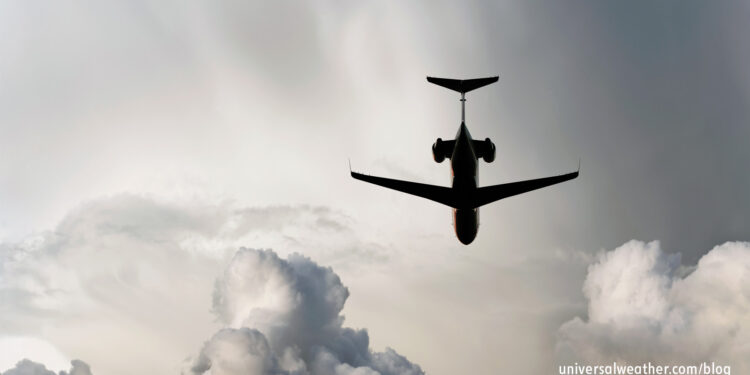Hurricanes and Typhoons vs. Business Aviation – Part 1: Understanding These Weather Events

Hurricane and typhoon activity occurs in many areas of the world during different seasons. It’s important to understand risks and operating limitations associated with these weather events. Keep in mind that even after a hurricane or typhoon has passed through an area, there may be airport closures, fuel shortages, and limitations of services to be mindful of.
1. What’s the difference between a hurricane and a typhoon?
In general, hurricanes and typhoons are tropical cyclones with maximum sustained winds of 74 mph (64 kts) or higher. A cyclone is any mass of air that spirals around a low-pressure center. The difference is in the locations they occur. Tropical cyclones form in all tropical ocean basins, with the exception of the south Atlantic. Specifically, tropical cyclones are very rare in the south Atlantic and there is a debate on if they are tropical, extra-tropical, or sub-tropical. Tropical cyclones in the west Pacific are called typhoons, and those in the Atlantic and east Pacific Ocean are called hurricanes. In the Indian Ocean and southern hemisphere, they’re often referred to as severe tropical cyclones.
02/20/13: Updated by author
2. How do these weather events differ in intensity?
A tropical depression is a tropical cyclone with maximum sustained winds of 38 mph (33 kts) or less, while a tropical storm has maximum sustained winds of 39 – 73 mph (34 – 63 kts). A hurricane has winds of at least 74 mph or 64kts.
A major hurricane or severe typhoon has maximum sustained winds of 111 mph (96 kts), corresponding to category three or higher on the Saffir-Simpson hurricane wind scale.
The term “super typhoon” is used for cyclones with winds of 130 kts or greater in the western Pacific, while a “super cyclone” refers to cyclones with wind speeds greater than 119 mph in the northern Indian Ocean.
3. What are the categories for each type of storm?
The Saffir-Simpson scale has five categories:
- Category 1: winds 74-95 mph (64-82 kts)
- Category 2: winds 96-110 mph (83-95kts)
- Category 3: winds 111-130 mph (96-112kts)
- Category 4: winds 131-156 mph (113-136kts)
- Category 5: winds greater than 156 mph (greater than 137kts)
4. What’s the season for these weather events?
Typhoons in the western Pacific basin have been observed in every month of the year, but April to January is considered the primary season. Hurricane season in the north Atlantic basin lasts from June 1st to November 30th. Hurricane season in the eastern north Pacific basin starts earlier – May 15th – but ends on November 30th. In the northern Indian Ocean basin, tropical cyclones occur during two periods of the year – May through June and mid-October through November. Tropical Cyclone season in the region around Australia, and in the southern Indian and Pacific Oceans, occurs from November through April.
5. How do these tropical storms impact business aviation?
These systems can have a severe impact on business aviation. Even a minimal tropical depression can disrupt operations. Heavy rains associated with slow- moving depressions can cause devastating flooding and make airfield operations difficult. The stronger the cyclone, the greater the potential for severe damage. Airfields may close days in advance of a tropical cyclone, causing aircraft to be repositioned or trips to be cancelled. Repairs to airfields and surrounding communities can take time after a cyclone passes through.
6. What sort of issues may arise during a trip?
A rapidly developing tropical cyclone may take operators by surprise. Un-forecast changes in direction or strength may necessitate last-minute changes to your trip. Even if you arrive at a destination after the cyclone has passed through, airfields may be closed, and services, including fuel, may not be available.
Conclusion
Be vigilant and get a climatological brief on severe weather and potential for severe weather in advance and on the day of operation. Operators should avoid areas of potential hurricane and typhoon activity whenever possible.
Questions?
If you have any questions about this article, contact me at stevearbogast@univ-wea.com.
Stay tuned for Part 2, which covers advance preparation when operating during a hurricane/typhoon season.




